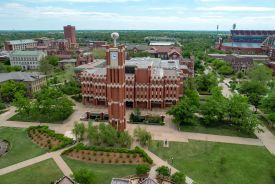With help from the Atacama Large Millimeter/submillimeter Array (ALMA) telescope, a group of astronomers was able to learn why "starburst galaxies" do in fact burst.
In a press release from the National Radio Astronomy Observatory (NRAO), such galaxies converts its gas at a torrid pace - "up to 1,000 times faster than typical spiral galaxies like the Milky Way." For their observations, the astronomers examined NGC 253, dubbed the Sculptor Galaxy.
"All stars form in dense clouds of dust and gas," Adam Leroy, a former NRAO astronomer who now works at Ohio State University, said in the release. "Until now, however, scientists struggled to see exactly what was going on inside starburst galaxies that distinguished them from other star-forming regions."
The astronomers called Sculptor a "disk-shaped" galaxy and estimated its distance from Earth to be 11.5 million light years.
"There is a class of galaxies and parts of galaxies, we call them starbursts, where we know that gas is just plain better at forming stars," Leroy said. "To understand why, we took one of the nearest such regions and pulled it apart - layer by layer - to see what makes the gas in these places so much more efficient at star formation."
When looking into the galaxy, the team found the clouds within to be far larger, more compact and greatly erratic.
"These differences have wide-ranging implications for how galaxies grow and evolve," concluded Leroy. "What we would ultimately like to know is whether a starburst like Sculptor produces not just more stars, but different types of stars than a galaxy like the Milky Way. ALMA is bringing us much closer to that goal."
© 2025 University Herald, All rights reserved. Do not reproduce without permission.








